Header logo
header top contact widget
Implant Placement
Achieve Smile Goals With A Periodontist
Posted on Dec 11, 2023 by William J. Claiborne, DDS MS
If you’re like me, I’m usually looking at the end of each year feeling like there are several things I wanted to accomplish for the year, but kept putting them off until I ran out of time.
For some people, their oral health and appearance goals are on this list, with some who keep moving the goals to the next year and the next. These goals may include:
• Improving the appearance of a smile
• Having a “cleaner” mouth with fresh breath, etc.
• Replacing missing teeth
• Getting past fear or anxiety of dental visits
If you have one of these on your list, you may be surprised that a periodontal specialist can play a major role in helping you achieve your goals. And, because of the advanced skill level of a periodontist, your comfort, time in treatment and overall results can make the process easier for you.
Many general dentists and other dental specialists refer their patients to a for their specific skills. A periodontist is a dental specialist who is the expert in caring for the gum tissues in your mouth and in the placement of dental implants.
The majority of patients arrive because of periodontal (gum) disease. Common symptoms are red, swollen and tender gums. It often causes gum that bleed easily (often noticed when brushing teeth) and persistent bad breath.
Gum disease (sometimes referred to as ‘perio’ disease) only worsens without treatment. It is the leading cause of adult tooth loss. Additionally, it has been linked to the development or worsening of a long list of serious health problems elsewhere in the body.
Because the inflammatory bacteria disease can enter the bloodstream through diseased gums, their presence can activate conditions that are seemingly unrelated to oral health. Yet, the connection is severe. These health problems include stroke, heart attack, Alzheimer’s disease, dementia, preterm babies, some cancers, arthritis, diabetes, and erectile dysfunction (ED).
In our Asheville periodontal dental office, we are able to treat all stages of gum disease to restore your oral health and minimize the risk of tooth loss. For those who have developed gum disease because they’ve been afraid of dental visits, we offer oral and IV sedation (“twilight sleep”).
Sedation is administered safely by a doctor in anesthesia who uses advanced safety equipment. Our priority is always patient comfort with their safety equally so.
Too, our advanced technology is able to minimize treatment time with amazing results. For example, LANAP (Laser-Assisted New Attachment Procedure) combined with PERIOLASE MVP-7 is designed to efficiently and effectively treat periodontitis (advanced gum disease) with the advantages of a dental laser. This offers non-surgical treatment for patients with moderate to severe periodontal disease. LANAP treatment minimizes discomfort and has a quick recovery time. It has also been found to stimulate bone regrowth in damaged areas.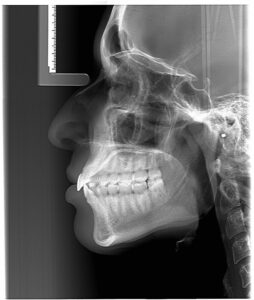
When tooth loss has occurred (whether from gum disease, an accident, or due to genetics), our NW NC dental specialty office also works with a number of dentists in the diagnosis and placement of dental implants.
With over 40 different implant systems, the one suited best for you depends on factors that an experienced dentist must take into consideration. For example, the number of implants you need and how much jaw bone mass exists.
For individuals who have lost a great deal of bone, specific implant types may be recommended. Some, like the “All On 4” implant system, uses specially designed implants which are placed at specific angles.
Bone loss can also be overcome by incorporating a bone rebuilding process into treatment. This is done prior to implant placement and does not require a bone graft. In many cases, we can apply a bone rebuilding material that restores ample bone mass.
The same is true when the sinus cavity will be too close to the proximity. This can be remedied through a “sinus lift.” We provide complete services of these procedures as well as dental implant placement – all performed with advanced skills and technology, such as our Cone Beam 3D imaging.
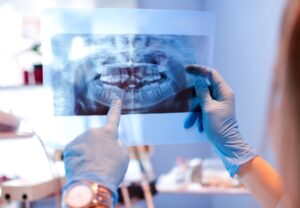 These images are ideal in diagnosis and treatment planning by giving a clear view of the mandible and maxilla (upper and lower jaw). Cone beam radiographs provide images in sagittal, axial, and coronal planes. This makes it possible to locate and trace the mandibular nerve canal for pre-surgical planning for an ideal implant position. Patients are exposed to only minute levels of radiation through a process that is fast and comfortable.
These images are ideal in diagnosis and treatment planning by giving a clear view of the mandible and maxilla (upper and lower jaw). Cone beam radiographs provide images in sagittal, axial, and coronal planes. This makes it possible to locate and trace the mandibular nerve canal for pre-surgical planning for an ideal implant position. Patients are exposed to only minute levels of radiation through a process that is fast and comfortable.
When the enhanced appearance of a smile is being sought, a periodontist also plays a part in helping to create a balanced smile line. In the procedure known as “crown lengthening,” the arch of gum tissues over teeth visible in a smile can be repositioned. This is done in a procedure known as a gingivectomy.
A gingivectomy is also performed to repair a “gummy smile.” This is when too much gum tissue shows above the teeth most visible in a smile. While the condition is not detrimental to oral health, some individuals seek to have it corrected by a periodontist.
Get the coming year started with your smile goals achieved! Call our Asheville periodontal dental office to schedule a consultation. Our friendly staff can help you arrange this private time together by calling 828-274-9440.
A Periodontist Can Contour Gum Tissues For A More Beautiful Smile
Posted on Nov 23, 2023 by William J. Claiborne, DDS MS
During the holidays, my wife and I attend gatherings where we occasionally meet new people. A common question, as applies to most of us, is “What do you do?” When I reply that I’m a periodontist, it is often met with a look of not knowing what a periodontist is but not wanting to appear as if that’s the case.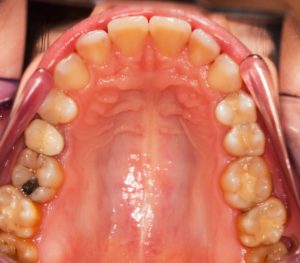
I’d like to explain what “we” are and, from a smile enhancement basis, what we can provide. I typically find that when I say “periodontal plastic surgery” it comes across as far more familiar than “performing gingivectomies.”
A periodontist is a dental specialist who has an advanced level of understanding when it comes to diseases of the oral tissues, reshaping of gum tissues and in the selection and placement of dental implants.
The American Academy of Periodontology defines a Periodontist as:
“A periodontist is a dentist who specializes in the prevention, diagnosis, and treatment of periodontal disease, and in the placement of dental implants. Periodontists are also experts in the treatment of oral inflammation. Periodontists receive extensive training in these areas, including three additional years of education beyond dental school. They are familiar with the latest techniques for diagnosing and treating periodontal disease, and are also trained in performing cosmetic periodontal procedures.”
https://www.perio.org/consumer/what-is-a-periodontist
To reach this specialty begins with educational requirements that are extensive. First, there is completion of 4 years of college (for an undergraduate degree) followed by another 4 years in dental school (for a doctorate). To specialize in Periodontics, he or she must further their education for another 3-4 years before completing the stringent requirements for specialty certification in periodontics.
The gums are rather under-rated when it comes to the tremendous role they play in both oral health and even your overall health.
Think of the gum tissues as a protective blanket in the mouth. The gums cover over the structures that support teeth and house the tissues and bone that are vital to our health. For instance, look at the base of each tooth. You’ll see that gum tissues snugly wrap around the base of each tooth. This protective seal is what prevents bacterial penetration beneath the gum line.
When oral bacteria amass to an extent that cannot be controlled by oral hygiene measures at home, they cause inflammation in the gums. In turn, the gums loosen their tight grip around teeth, which allows entry of the now-potent bacteria. These infectious bacteria have been linked to a number of problems related to a long list of serious health problems.
Oral bacteria has been found to trigger or worsen systemic conditions, including atherosclerotic vascular (heart) disease, pulmonary (respiratory) disease, diabetes, pregnancy-related complications (including preterm births), osteoporosis (bone loss), and kidney disease. A shared trait between gum disease and these medical conditions is that they are chronic conditions that take a long time to develop.
https://www.agd.org/docs/default-source/self-instruction-(gendent)/gendent_nd17_aafp_kane.pdf
It is important to be familiar with the signs and symptoms of periodontal (gum) disease, which include:
• Red, swollen or tender gums
• Bleeding while brushing, flossing, or when eating certain foods
• Gums that pull away from the teeth (recede) or make the teeth appear longer than normal
• Loose or separating teeth
• Pus pockets that form between gums and teeth
• Sores in your mouth
• Persistent bad breath
• A change in the way teeth fit together when biting
• A change in the fit of partial dentures
If you have any of these, you are urged to seek a thorough periodontal evaluation as soon as possible. This disease will only worsen without treatment. Gum disease is the nation’s leading cause of adult tooth loss.
Healthy gum tissues do more than serve in a protective role. The appearance of a smile can be greatly affected by the shape and amount of gum tissues exposed when smiling.
When a smile shows too much or too little gum tissue bordering the tops of teeth, it moves the “smile line” out of balance. For example, in a beautiful smile, the arches of gum tissues visible in a full smile flow at a similar height. These gum arches are in a complimentary line to teeth, rather than at varying levels over teeth. When the gum lime is not evenly balanced, it causes a smile to have a jumbled look.
Crown lengthening is performed to reposition the gum tissues to enhance the appearance of a smile. In addition to creating a more appealing look, crown lengthening is also performed to restore the tight seal of protection around teeth. While you enjoy the beauty of your new smile, crown lengthening gives your oral health a boost at the same time.
When the height of gum tissues that show above all teeth in a smile is too high, it is referred to as a “gummy smile.” A gummy smile is not detrimental to your oral health. However, having one does affect the appearance of a smile based on balance. For some people, it makes them “hold back” on a full smile.
This can be corrected with a gingivectomy. To begin, we numb the gum tissues and carefully trim the excess. As a Periodontist, I take specific measures to ensure a natural looking arch remains over the teeth while preserving the natural points that ‘dip’ between each tooth.
 A gingivectomy is performed in our Asheville periodontal office with a dental laser. This provides patients with a number of advantages: (1) enhanced comfort; (2) precision lines; (3) minimal or no bleeding; and, (4) faster healing time.
A gingivectomy is performed in our Asheville periodontal office with a dental laser. This provides patients with a number of advantages: (1) enhanced comfort; (2) precision lines; (3) minimal or no bleeding; and, (4) faster healing time.
In our Asheville NC periodontal office, we use the highly-advanced LANAP with PerioLase MVP 7 Laser-Assisted Attachment Procedure. This is an advanced protocol that efficiently and effectively treats advanced gum disease (periodontitis) with the added advantages of a dental laser. It is a non-surgical alternative for patients with moderate to severe periodontal disease, causes very little discomfort and has a quick recovery time. It has also been found to stimulate bone regrowth in damaged areas.
In some cases, the crown lengthening procedure can save a tooth from removal. Typically, when a tooth fractures or breaks at the gum line, it must be removed since there is not enough tooth structure to support a crown. However, a crown lengthening procedure may be able to expose more of the tooth’s structure, essentially saving the natural tooth.
For those who have avoided gum treatment due to dental fear, we offer several sedation options, including oral and IV sedation. Oral sedation is a pill that helps patients relax. It also has an amnesiac effect, leaving most with little or no memory of treatment afterward.
I.V. sedation (also known as “twilight sleep”) places the patient in a deeper sleep state and erases memory of the procedure. Here, anesthesia is overseen by a medical doctor (MD) who is a board certified Anesthesiologist. With both sedation options, patients are closely monitored with advanced safety equipment throughout treatment.
We help patients understand that their fears and concerns are not unusual. The doctors and staff of our Asheville periodontal dental office respect each patient and provide gentle, compassionate care – at every appointment.
We believe you’ll find no better periodontal dental environment in western NC. Whatever your need for the treatment of gum disease, recontouring of gum tissues, or in the placement of dental implants, call 828-274-9440 to learn more or to schedule a consultation appointment. New patients are always welcome and a referral is not required.
Laser Dentistry, Cone Beam Imaging Among Our Advanced Features!
Posted on Nov 15, 2023 by William J. Claiborne, DDS MS
Like your “adult” teeth, your gum tissues are irreplaceable. Without question, they deserve the care and attention that come with keeping them healthy and doing their job.
Gum tissues are designed to protect the structures underneath. These include bones, tooth roots, tendons, and muscles to prevent entry of harmful bacteria. Gums are designed to snugly wrap the base of each tooth to keep bacteria from penetrating sensitive root segments of teeth.
Without this protective seal around teeth, the potential for periodontal (gum) disease greatly increases. And gum disease is at concerningly high levels in the U.S. with an estimated 47% of adults having some level of gum disease.
I believe that this high level of gum disease is largely in part due to Americans not being fully familiar with the symptoms. Some are easily ignored or “brushed off” as normal. This is why it is important to be familiar with the signs and symptoms, which include:
• Red, swollen or tender gums or other pain in your mouth
• Bleeding while brushing, flossing, or when eating certain foods
• Gums that pulling away from the base of teeth, making them appear teeth longer
• Loose or separating teeth
• Pus between your gums and teeth
• Sores in your mouth
• Persistent bad breath
• A change in the way your teeth fit together when biting
• A change in the fit of partial dentures
If you are experiencing any of these symptoms, you are urged to seek care with a periodontal specialist as soon as possible. This disease will only worsen without treatment.
Why should you be concerned about periodontal disease?
Gum disease is the nation’s leading cause of adult tooth loss. Additionally, research has linked the bacteria of periodontitis with serious health problems. These include heart disease, stroke, arthritis, diabetes, some cancers, preterm babies, erectile dysfunction (ED) and high blood pressure. Studies on links to Alzheimer’s disease are showing concerning correlations.
A periodontist is an expert in the treatment of all stages of gum disease, including gingivitis, periodontal disease, and the advanced form of periodontitis.
In addition to having these specific skills, I’d like to share the benefits of some of our amazing technology we make available to our Western NC patients. One with a wide range of benefits to patient care is our Dental Laser.
Nd: YAG Dental Laser: This is a small, hand-held device that eliminates or greatly minimizes bleeding during procedures. It also reduces numbing requirements, removes bacteria and easily uncovers gum tissue where dental implants have been placed.
Additionally, laser dentistry can quickly repair oral ulcers and beautifully re-contours or repairs gum tissue with a precision line. Some specific treatments that are ideal for a dental laser include:
Canker & Cold Sores: The laser is also ideal for rapid healing of canker and cold sores. Laser therapy can halt the progression of canker sores, reducing the pain in a day or so. Otherwise, they can last up to 2 weeks. When it comes to cold sores, they are best treated with our laser when the very first symptom arises. Tingling or burning sensation is the first sign that a cold sore is about to erupt. Although lasers can still treat these lesions in later stages, the treatment is most effective in initial stages. Most patients notice significant improvement in comfort after laser treatment with a much shorter duration.
Gum Disease Treatment: In our office, we also use a dental laser to destroy the bacteria of gum disease. This technology also speeds the process and heightens your comfort, saving you treatment time with faster healing.
Correcting a “Gummy Smile”: This is when a smile shows too much gum tissue above upper teeth when smiling fully. We correct this in a procedure known as crown lengthening. In this, a gingivectomy adjusts the height of gum tissues so the smile has a more even smile line. This may involve the use of a dental laser, which provides a precision line and speeds healing.
Balancing a smile line: A gingivectomy is also advised to rebalance the frame of gum tissues that arch the teeth visible in a smile. When one or two teeth have different heights of gum tissue, the smile has a jumbled look. A dental laser can even out the smile line and enhance the beauty of a smile.
Saving a tooth broken near the gum line: When a tooth breaks at or near the gum line, it often requires removal. In some cases, however, we can save the tooth by exposing enough of the structure to receive a crown. This helps the patient to avoid removal and thereby preserves the supporting jaw bone.
In our Asheville NC periodontal dental office, we feature additional technologies, some of the most advanced in the industry. These include:
LANAP Protocol Using PerioLase MVP-7: This process is designed to efficiently and effectively treat periodontitis (advanced gum disease) through laser technology. Treatment is administered with minimal (or no) discomfort and recovery time is minimal. Amazingly, this technology has also been able to stimulate bone regrowth in damaged areas.
Cone Beam 3D Imaging: These views allow us to see your jaw in 3D dimensions and to be able to view it at varying angles. This enables us to see what used to be hidden from view.
Cone Beam images are often used to assess:
• Dental Implant Positions
• Temporomandibular Joints (TMJ)
• Airway Passages
• Bone Structure Damage or Bone Loss
• Teeth, Tooth Roots and Facial Structures
• Signs Of Infections, Cysts, Or Tumors
CS 3600 Intraoral Scanner: Through this process, our patient no longer have impressions made with bulky, goopy trays held in their mouths. This technology quickly and comfortably scans the mouth’s interior for digital impressions using a small, handheld scanner. It can also reach difficult–to–access areas in the patient’s mouth with improved patient comfort.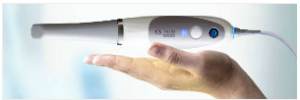
Simplant Dental Software for Computerized Dental Implant Placement: This system helps in pre-surgical positioning of dental implants on the computer, using a 3D model of the patient’s jaw. This aids in the selection of the implant type to ensure a precision fit.
Intraoral Camera Technology: This provides outstanding quality of images within the mouth. These images are sent to screen for a clear, crisp view so we can confer with patients on specific treatment needs.
Computer Imaging In Treatment Suites: Treatment suites are equipped with computers for convenient image sharing with patients.
Oral & IV Sedation: We take patient comfort very seriously in our Asheville periodontal dental office. That’s a commitment we make to every patient at every appointment. Here, patient comfort is supported by our sedation options. These include oral and I.V. sedation. Also referred to as “twilight sleep” or “sleep dentistry,” these sedatives are administered by a highly-skilled anesthesiologist who uses advanced safety monitoring equipment throughout the patient’s procedure.
My staff and I also take great pride in providing patients with an environment of respect. Some adults come to us embarrassed by the condition of their oral health or missing teeth. Here, we strive to make patients feel they are in the right hands in the right place.
If tooth loss has occurred, a periodontist also specializes in the selection and placement of all types of dental implants. Dental implants, for many reasons, are the preferred option for tooth replacement.
Call 828-274-9440 to schedule a consultation in our state-of-the-art Asheville periodontal dental office. New patients are always welcome and a referral is not always necessary.
Know How Oral Bacteria Form & Cause Damage
Posted on Nov 07, 2023 by William J. Claiborne, DDS MS
Often, once people understand how something breaks down, they are able to watch for telltale signs or take preventive measures. For example, when the grooves in a vehicle’s tires become more shallow, it’s obvious they need to make arrangements for new tires.
This is true, also, for your oral health. Knowing concerning oral signs and symptoms can help you prevent cavities, periodontal (gum) disease and tooth loss.
Oral bacteria exists in every mouth; some of it is “good” bacteria. The good bacteria are even helpful to the digestive system. However, harmful bacteria can run rampant if not kept under control.
The average mouth houses around 20 billion (that’s billion with a “b”), consisting of about 700 different types. Bacteria breed very quickly. The numbers can grow amazingly fast and their buildup produces a bacterial film that coats the teeth and gums. This is known as plaque.
Plaque is the sticky coating in your mouth, most obvious when you first wake up. When plaque is not removed regularly (through thorough brushing), the bacteria attack tooth enamel. Results include bad breath, yellowed teeth, cavities and tender gums.
Plaque formation actually begins as you chew carbohydrates, which seems to be prevalent in most of the foods we eat in today’s diet. As carbohydrates blend with saliva and existing bacteria in the mouth, an acid is created.
Plaque that is allowed to remain on teeth for about 48 hours hardens. This is known as tartar, which is a mass of bacteria that forms between and at the base of teeth.
Once in this hardened form, removal can only occur with special tools used by your dentist or dental hygienist. This is what your hygienist is scraping off during cleanings. Without tartar being removed, it causes the gums to swell, feel tender and may bleed when brushing. This is typically the initial stage of gum disease, known as gingivitis.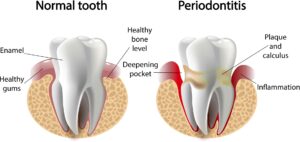
However, for people who brush twice a day and still have tartar formation between dental hygiene appointments, there are factors that may be contributing. Some of these are not common knowledge, which is important to know in your prevention goals. These include:
Having “dry mouth”: There are a number of reasons that some people suffer with a drier mouth than others. Unfortunately, those who have insufficient saliva flow (which continually helps to cleanse the mouth) are more susceptible to tooth decay from plaque and tartar.
Saliva protects teeth and gums by helping to manage the growth of harmful bacteria while maintaining a neutral pH in the mouth. This slows microbial growth and keeps bacteria from sticking to teeth.
Other contributors to dry mouth include aging, caffeine (including coffee, tea, sodas, and chocolate), smoking, and a wide range of medications (such as antidepressants, decongestants and diuretics).
Poor oral hygiene: Since the pandemic, normal routines have been uprooted for many people as they have adjusted their “ready for the day” tasks to more casual timetables. Unfortunately, this seems to have left the habitual brushing and flossing times to days where oral hygiene has dropped out of the twice-a-day routine.
A March 2023 poll (conducted on behalf of CeraVe) included 2,000 men between the ages of 18 – 42. They found that only 54% brush their teeth daily (with one-third admitting to only once a day when they do brush). To no surprise, a recent report by the Centers for Disease Control & Prevention reveals that nearly 26% of ages 20 – 44 have untreated dental caries.
Frequent snacking: Every time you eat or drink, an acid attack begins in the mouth. This acid flows in with saliva to begin the initial stage of digestion. However, this acid is very potent, enough to even soften tooth enamel. So, every time you take a bite of a cookie, acid flows into the mouth and remains there for about 20-30 minutes. When the mouth endures frequent acid attacks from snacking between meals, the damage to precious tooth enamel will catch up to you in the form of cavities.
In addition to the harm that oral bacteria can cause teeth, the gum tissues – essentially the protective coating to the vital structures that support teeth – endure the rigors of bacterial overload. Eventually, this catches up to most people in the form of:
• Gingivitis – As the initial stage of gum disease, inflammation is triggered by plaque buildup at the gum line. When daily brushing and flossing fail to thoroughly remove plaque, toxins form that cause irritation to the gum tissues. Once symptoms emerge, they may include seeing blood in the sink when brushing or having sore, swollen gums.
• Periodontitis – As the disease advances, the bone structures and fibers that support teeth are damaged by the destruction of infectious oral bacteria. At this stage, pockets form below the gum line, filling with bacteria-laden plaque.
• Advanced Periodontitis – In the advanced stage of gum disease, fibers and bone supporting natural teeth are destroyed. This can cause teeth to shift or loosen, requiring aggressive treatment to prevent tooth loss. Eventually, some teeth may require removal.
Proactive measures NOW can help you avoid costly repairs to teeth, tooth replacement or the treatment process to rid periodontal disease. Start now with:
– Brush twice daily, floss every day and maintain regular dental check-ups. Thorough at-home oral care and regular dental check-ups can help you avoid problems from occurring in the first place.
– Delay brushing after eating or drinking. Wait 20-30 minutes to allow the acid attack in your mouth to subside. Remember, this acid can soften tooth enamel. The abrasiveness of a tooth brush or tooth paste can wear away precious tooth enamel.
– Swish with water. Enjoy a cup of coffee or glass of wine but try to alter these with a glass of water, allowing it to wash over teeth before swallowing. Or, swish with water.
– Eat sweets only with meals. Rather than forgo a sweet indulgence as a snack, enjoy your favorites as dessert following your meal since your mouth is already enduring an acid attack. This merely prolongs an acid attack rather than trigger a new one.
A healthy mouth is important for your overall health, as research has shown. We now know that the inflammatory bacteria of periodontal (gum) disease are able to enter the bloodstream through tears in weakened gum tissues. Numerous studies have found this bacteria can trigger harmful reactions.
For example, the bacteria can cause inflammation that sets into motion risks factors connected to arthritis and diabetes. Some cancers have also been correlated to this bacteria. Heart disease, stroke and high blood pressure have been as well. Alzheimer’s is also being studied along these lines.
While there is no clear pathway to verify gum disease bacteria are the “cause” of these serious conditions, research has continually shown they are linked, which can greatly increase one’s potential for having these problems develop (or worsen).
If you haven’t been fully committed to your oral health, there is no better time to begin than the present. Start with a thorough periodontal examination by calling 828-274-9440.
If dental fears have caused you to delay or avoid regular dental care, consider beginning with a consultation. This occurs in a comfortable, private room that is removed from the clinical side of the office. Too, many treatments can include oral or IV sedation (sleep dentistry, or “twilight sleep”).
And, if budget constraints are an obstacle, we offer several payment plans. Most are interest-free with no down payment required (for qualified individuals). Feel free to ask about these during your consultation.
Sources:
www.todaysrdh.com/
perio.org
Recent Posts
Categories
Archives
- September 2024
- August 2024
- July 2024
- June 2024
- May 2024
- April 2024
- March 2024
- February 2024
- January 2024
- December 2023
- November 2023
- October 2023
- September 2023
- August 2023
- July 2023
- June 2023
- May 2023
- April 2023
- March 2023
- February 2023
- January 2023
- December 2022
- November 2022
- October 2022
- September 2022
- August 2022
- July 2022
- June 2022
- May 2022
- April 2022
- March 2022
- February 2022
- January 2022
- December 2021
- November 2021
- October 2021
- September 2021
- August 2021
- July 2021
- June 2021
- May 2021
- April 2021
- March 2021
- February 2021
- January 2021
- December 2020
- November 2020
- October 2020
- September 2020
- August 2020
- July 2020
- June 2020
- May 2020
- April 2020
- March 2020
- February 2020
- January 2020
- December 2019
- November 2019
- October 2019
- September 2019
- August 2019
- July 2019
- June 2019
- May 2019
- April 2019
- March 2019
- February 2019
- January 2019
- December 2018
- November 2018
- October 2018
- September 2018
- August 2018
- July 2018
- June 2018
- May 2018
- April 2018
- March 2018
- February 2018
- January 2018
- December 2017
- November 2017
- October 2017
- September 2017
- August 2017
- July 2017
- June 2017
- May 2017
- April 2017
- March 2017
- February 2017
- January 2017
- December 2016
- November 2016
- October 2016
- September 2016
- August 2016
- July 2016
- June 2016
- May 2016
- April 2016
- March 2016
- February 2016
- January 2016
- December 2015
- November 2015
- October 2015
- September 2015
- August 2015
- July 2015
- June 2015
- May 2015
- April 2015
- March 2015
- February 2015
- January 2015
- December 2014
- November 2014
- October 2014
- September 2014
- August 2014
- July 2014
- June 2014
- May 2014
- April 2014
- March 2014
- February 2014
- January 2014
- December 2013
- November 2013
- October 2013
- September 2013
- August 2013
- July 2013
- June 2013
- May 2013
- April 2013
- March 2013
- February 2013
- January 2013
- December 2012
- November 2012
- October 2012
- September 2012
- August 2012
- July 2012
- June 2012


